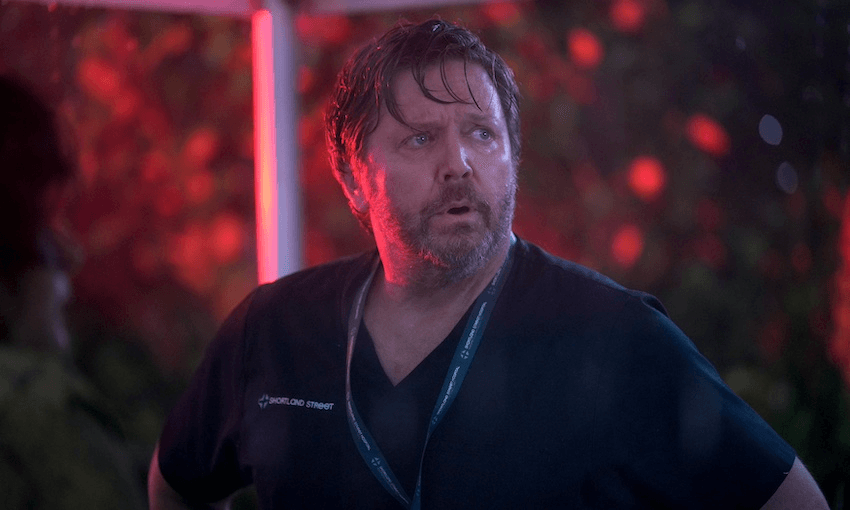After 13 years on the air, 7 Days has moved to a pre-watershed timeslot and ditched its most regular panellists. Stewart Sowman-Lund tunes in for the first episode.
If you scroll through the comments on the 7 Days Facebook page (I’d strongly recommend you don’t do this), there are two persisting themes. One: this show can’t work at 7.30pm and has only moved there because of “wokeness” and for “PC reasons”. And two: where the hell are Dai Henwood and Paul Ego?
It’s true: 7 Days, the long-running topical panel show, has moved from its traditional Friday night slot to the more family friendly 7.30pm on a Thursday. Not to ring the death knell too early, but that is the time slot that killed Jono and Ben (formally Jono and Ben at Ten) a few years back. With that shift, and an hour-long runtime, comes a moratorium on swearing – I think I picked up a casual “shit” but that’s about it – and a tempering of general lewdness. Last night’s premiere episode brought with it a few mentions of “buttholes” (I think that’s the first time I’ve ever had to put that word in quote marks) and a sex joke or two, but nothing that I wouldn’t watch with my mum. In fact, my mum was quick to text me at 8.30pm to tell me she’d enjoyed the show. An endorsement worthy of a billboard? Probably not.
It’s also true: team captains Dai Henwood and Paul Ego, who along with host Jeremy Corbett have been with the show since its inception in 2009, are notably absent from the first episode of the new season. We’ve been promised they’ll make appearances in the future, but Corbett says the show will now be “treating our captains like meat in a kebab shop: they’ll be rotating”. It’s Guy Montgomery and Laura Daniel who are challenged with leading the teams to victory in episode one and I can’t say I especially missed either Henwood or Ego.
So, what else has changed? Not a lot, really. There’s a flashy new title sequence with a slightly strange xylophone-esque theme tune. There were also more women than men on the panel for the first time ever. Laura Daniel, leading an all-female team of Urzila Carlson and Melanie Bracewell, called it an “historic moment” where her “entire team is attractive”. If you’re the sort of person who chucks out the word “woke” on a Facebook comment thread then this new gender imbalance will probably upset you. For the rest of us, this is simply a necessary course correction for a show that at one time had fewer women than a Guess Who boardgame. It’s mind-boggling to think that it’s taken until 2022 for one of our most popular comedy shows to realise that one or two token females probably isn’t good enough.
Another first for 7 Days, though less historic: the points actually matter this time. Or at least they ostensibly do. There’s a new 7 Days “sticker chart”, with each round win scoring your team a sticker. Win the most stickers, you take home a prize supposedly taken from a news event of the past week. In episode one, that’s a tent and a copy of Trevor Mallard’s mixtape. It still kind of sounds like points don’t matter.
The games are a mix of both new and old. Yes Minister, in which an MP is asked comedic questions but cannot reply with either a “yes” or “no”, is back and National’s Erica Stanford is first up in the chair. One round, in which the teams have to guess the made up headline out of a selection of four, is effectively plucked from the UK’s Never Mind the Buzzcocks while another game is a near replica of Mock the Week’s round Spinning News. As for the round with the worst name? “Quiztory Never Repeats” would have to take the cake, in which the teams are challenged to identify what historical news story took place on a select date.
The most laughs were undoubtedly generated by a new round where the teams get to show off a pre-recorded short film they’ve made based on a news story from the past week. Laura Daniel’s high budget film trailer about a police officer’s affair with a suspected drug dealer was expertly crafted, while Guy Montgomery’s solo effort, about a man who attempted to get multiple booster shots, was as ridiculous as it was funny.
Generally speaking, though, this is the same 7 Days you either love, hate, or couldn’t care less about. If you’re not the type to be outraged by the decreased quota of men and you don’t mind losing out on a few missing swears, the show has pleasingly (or infuriatingly) kept its 13-year-old formula largely unchanged.
In other words, this review was kind of pointless.



